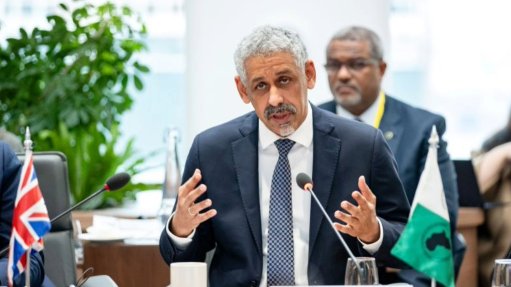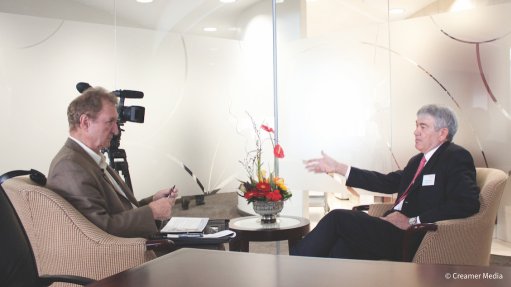Reflection on proposed splitting of Eskom
The mere mention of the splitting of State-owned electricity utility Eskom into three parts invokes the conclusion that it is a Trojan horse for privatisation. There may be some validity in this assumption, but it is not clear, given Eskom’s current woes and its inability to pass costs fully to the consumer, that private investors will line up to buy a stake in the utility. And neither can we conclude that the proposed unbundling will be a success. Turning a concept into reality takes time and requires a depth of experience.
Nonetheless, Eskom is burdened with a large amount of debt, high costs and power plants – both old and new – that do not work as they should.
Unbundling, if it materialises, will be the most radical decision in Eskom’s 90-year history. Are there any merits in the idea?
It is argued that unbundling could help to focus management and expertise on discrete functions and allow the State, which is the primary shareholder, to get a granular understanding of the separated entities. Eskom is a behemoth and it is often notoriously difficult to get to the bottom of some of its challenges.
It might also be better for Eskom to have an independent generation entity that is partly owned by the public. Generation will have to be freed up because a system that is wholly reliant on the good performance of one supplier is too risky; this is akin to having all our eggs in one basket.
The problems in Eskom’s generation business are crippling its ability to take advantage of its other assets. Splitting Eskom, even if we assume no privatisation takes place, can offer an escape route for its managers, who are being impacted on by the distractions from the generation business. The separation can enable the individual businesses – generation, transmission and distribution – to be more focused and not be consumed by one part of the vertically integrated entity.
If Eskom had more foresight, it could have been a player in the renewables sector. Perhaps, there is still opportunity for it to do so but it will have to compete with other players in the generation space.
Government can also set a conditional quota or participation right in independent power producers through conventional mechanisms and this may offer government the option to increase its share in the renewables sector.
The death spiral for utilities is a reality – driven by technology, demand shifts and tariff restrictions due to the socioeconomic impacts of full-cost tariff recovery.
Defections from the grid can be induced by the unpredictability of future costs and reliability of supply, which forces large firms and well-to-do households to go independent. Secondly, higher electricity costs reduce demand through household and firm-level demand management initiatives. Interestingly, these are all forms of privatisation because the ability of the State to ‘socialise’ sales of its services is restricted through private preference.
In the past, municipalities were allowed to self-generate and this should be permitted once again, with municipalities playing a bigger role in managing the upsurge in rooftop solar photovoltaic. Better a managed approach to this form of private defection than an anarchic situation which Eskom’s continued failure will elicit.
Too much is made of generation but the future is in who owns the grid. Fred Schweppe and his colleagues, in a paper written in 1980, which is titled ‘Homestatic Utility Control’, demonstrate that they could see the headwinds for utilities coming. Schweppe foresaw that, with greater computational power, grid intelligence would grow. Technology players in this area involve nontraditional players outside the electricity market – such as your Googles, Amazons, and so on.
Supply, which is usually load following, even in a competitive market, is an inefficient beast and expensive to maintain because, without an accurate forecast of demand, you have to run baseload power continuously and back this up with sources that can meet peak or unexpected surges in demand. Schweppe foresaw that, with improvements in technology, you could more directly influence supply and demand in ways that allow for continuous homeostasis, or system equilibrium. The main achievement of computational power is that it allows the whole system to be seen at once in real time.
We are perhaps not there yet, but we are bound to get there very soon. Technology is moving fast, and technology shifts and consumer preferences are disrupting ownership models and how we will deliver energy services in the future.
Strategically, the State should control the electron highway. In the long term, this will prove to be a far more valuable asset. Everybody needs a highway and, in future, not everybody will need the generating capacity of a central power utility. Transmission lines also help households save on storage costs.
The State should be much more agile in managing public and private interests in how it controls the acquisition and supply of electrons across the grid.
A smart transmission and distribution system also enables a publicly controlled entity to institute time-of-use tariffs – a much better mechanism for cost recovery than the existing National Energy Regulator of South Africa-approved tariffs through the multiyear price determination applications. Consumers who use too much electricity at the wrong time ought to pay for this privilege.
Those who cannot afford to pay for the full cost will benefit from the cheapest available source and a subsidy. Transmission control could also support generation in places where power is needed most so as to avoid losses, which is a hidden cost at the moment, given that power must be supplied from the load centre – in the north of the country – to meet the needs of southern demand. Finally, a more attuned transmission system with supply and demand needs can also reduce overcapitalisation in generation and grid capacity.
Article Enquiry
Email Article
Save Article
Feedback
To advertise email advertising@creamermedia.co.za or click here
Comments
Press Office
Announcements
What's On
Subscribe to improve your user experience...
Option 1 (equivalent of R125 a month):
Receive a weekly copy of Creamer Media's Engineering News & Mining Weekly magazine
(print copy for those in South Africa and e-magazine for those outside of South Africa)
Receive daily email newsletters
Access to full search results
Access archive of magazine back copies
Access to Projects in Progress
Access to ONE Research Report of your choice in PDF format
Option 2 (equivalent of R375 a month):
All benefits from Option 1
PLUS
Access to Creamer Media's Research Channel Africa for ALL Research Reports, in PDF format, on various industrial and mining sectors
including Electricity; Water; Energy Transition; Hydrogen; Roads, Rail and Ports; Coal; Gold; Platinum; Battery Metals; etc.
Already a subscriber?
Forgotten your password?
Receive weekly copy of Creamer Media's Engineering News & Mining Weekly magazine (print copy for those in South Africa and e-magazine for those outside of South Africa)
➕
Recieve daily email newsletters
➕
Access to full search results
➕
Access archive of magazine back copies
➕
Access to Projects in Progress
➕
Access to ONE Research Report of your choice in PDF format
RESEARCH CHANNEL AFRICA
R4500 (equivalent of R375 a month)
SUBSCRIBEAll benefits from Option 1
➕
Access to Creamer Media's Research Channel Africa for ALL Research Reports on various industrial and mining sectors, in PDF format, including on:
Electricity
➕
Water
➕
Energy Transition
➕
Hydrogen
➕
Roads, Rail and Ports
➕
Coal
➕
Gold
➕
Platinum
➕
Battery Metals
➕
etc.
Receive all benefits from Option 1 or Option 2 delivered to numerous people at your company
➕
Multiple User names and Passwords for simultaneous log-ins
➕
Intranet integration access to all in your organisation


















